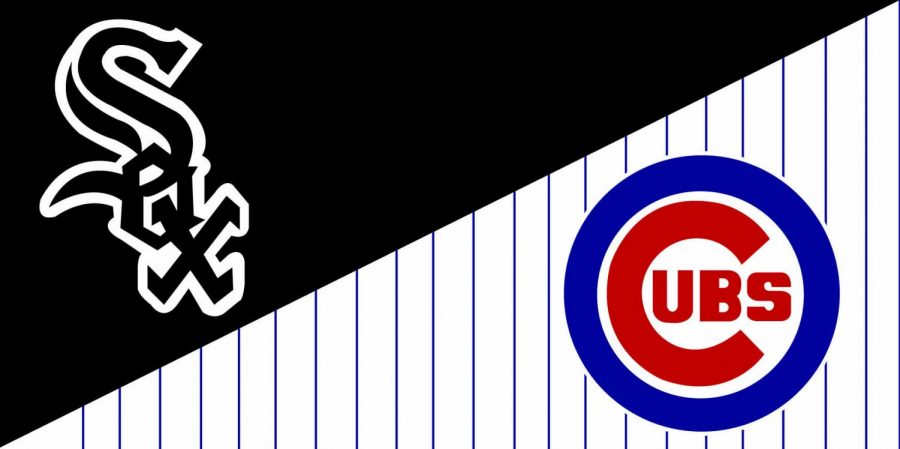Cubs, Sox clash in new exhibit
Cubs vs. Sox
November 24, 2014
There may be no greater rivalry between Major League Baseball teams that share the same city than that of the Chicago Cubs and the Chicago White Sox. The rivalry has lasted since the teams first took the field to face off in the 1906 World Series, a series which saw the Sox defeat the Cubs 4-2.
“Sox Vs. Cubs: The Chicago Civil Wars”, a new exhibit on the ninth floor of the Harold Washington Library Center, 400 S. State St., offers an in-depth look at the rivalry between the teams. The exhibit was produced by the Elmhurst Historical Museum in Elmhurst, Illinois, and features the statistics, photographs, memorabilia, history and evolution of each team’s uniforms over the years.
Lance Tawzer, curator of exhibits for Elmhurst Historical Museum and creator of the display, said he aims to dissect the nature of the rivalry between the two teams.
“[The idea] came about basically out of my brain from a standpoint that I thought it’s something that our community is divided about,” Tawzer said. “It’s something that you feel people will have a genuine stake in and something people would be passionate about.”
Tawzer, a California native, said it was difficult at first to find someone to partner with on the exhibit.
“That was actually a tough challenge—to find somebody to partner with that didn’t already have a stake in the game,” Tawzer said. “I interviewed quite a number of sports writers that are professional journalists and very talented people, but they all would basically admit that they grew up a fan of one team or the other.”
One of the more personal sections of the exhibit features confessions from fans on how and why they grew up a fan of the Cubs or Sox. Tawzer said he wanted to hear directly from the people.
“We really tried to allow the fan base themselves describe their feelings about their own team and [about] the other team in town,” Tawzer said.
The Cubs and White Sox have played each other 98 times since the MLB began regular season interleague play in 1997 in what has been dubbed the “Crosstown Classic.” The White Sox hold a narrow lead with 52 wins to the Cubs’ 46, according to statistics on the Crosstown Classic website.
Over the last decade, the teams have gone in opposite directions: The White Sox won the World Series in 2005 and have aggressively pursued top players in hopes of remaining a contender and repeating their championship success.
The Cubs, on the other hand, have had little success since making the playoffs in 2009, have traded top players for prospects and have not been shy about throwing the word “rebuild” around. In 2012, the Cubs finished with triple-digit losses for the third time in franchise history, according to an Oct. 1, 2012 Chicago Tribune report.
Despite differences in direction, the Cubs continue to be one of the wealthiest teams—worth $1.2 billion—good for fourth in the MLB, according to Forbes.com. The White Sox are worth $695 million, 10 spots behind the Cubs at No. 14.
George Castle, a historian for the Chicago Baseball Museum and author of several books on the Cubs, said factors such as value make the rivalry one-sided.
“It is White Sox fans being absolutely jealous, envious, almost drooling with envy at the perceived publicity advantage that the Cubs have, which is actually real,” Castle said. “Chicago is the only two-team market…where one team plays primarily its home games during the day, which is friendly for deadlines, particularly the six o’clock news.”
Castle said the Cubs continue to be worth more financially because they simply have more fans.
Among the many statistics the exhibit offers, is a chart that shows the attendance figures for each team over the years. The exhibit can be seen through Feb. 8, 2015.
Elizabeth M. Holland, museum specialist for the Special Collections and Preservation Division at the Harold Washington Library Center, said she hopes visitors learn something from the exhibit, regardless of what team they root for.
“There’s a lot of history here—we’ve included the history of their uniforms, souvenirs and baseball cards.” Holland said. “I hope [visitors] take away something about either or both teams—something they didn’t know prior to visiting,”








